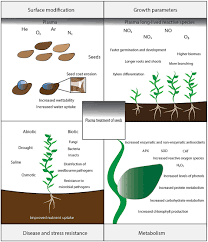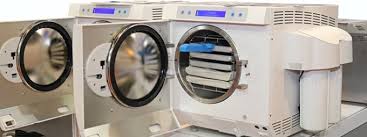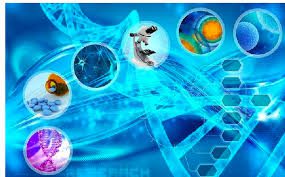Mechanisms Involved in Sterilization Process
The following are mechanisms involved in sterilization process;
1. Germicidal Lamp
Germicidal UV is delivered by a mercury-vapor lamp that emits UV at the germicidal wavelength. Mercury vapour emits at 254 nm. Many germicidal UV bulbs use special ballasts to regulate electrical current flow to the bulbs, similar to those needed for fluorescent lights.
In some cases, UVGI electrodeless lamps can be energized with microwaves, giving very long stable life and other advantages. This is known as ‘Microwave UV.’ Lamps are either amalgam or medium pressure lamps. Each type has specific strengths and weaknesses.
Read Also : The UV Sterilization Process and what is Sterilization Process?
2. Low-pressure UV Lamps
These offer high efficiencies (approx 35% UVC) but lower power, typically 1 W/cm³ power density.

3. Amalgam UV Lamps
A high-power version of low-pressure lamps is. They operate at higher temperatures and have a lifetime of up to 16,000 hours. Their efficiency is slightly lower than that of traditional low-pressure lamps (approx. 33% UVC output) and power density is approx. 2–3 W/cm³.
4. Medium-pressure UV
These lamps have a broad and pronounced peak-line spectrum and a high radiation output but lower UVC efficiency of 10% or less. Typical power density is 30 W/cm³ or greater.
Depending on the quartz glass used for the lamp body, low-pressure and amalgam UV lamps emit light at 254 nm and 185 nm (for oxidation).185 nm light is used to generate ozone.
The UV units for water treatment consist of a specialized low pressure mercury vapor lamp that produces ultraviolet radiation at 254 nm, or medium pressure UV lamps that produce a polychromatic output from 200 nm to visible and infrared energy.
The optimal wavelengths for disinfection are close to 260 nm (Gadgil, 1997). Medium pressure lamps are approximately 12% efficient, whilst amalgam low pressure lamps can be up to 40% efficient.
The UV lamp never contacts the water, it is either housed in a quartz glass sleeve inside the water chamber or mounted external to the water which flows through the transparent UV tube. It is mounted so that water can pass through a flow chamber, and UV rays are admitted and absorbed into the stream.
Sizing of a UV system is affected by three variables: flow rate, lamp power and UV transmittance in the water. UV manufacturers typically developed sophisticated Computational Fluid Dynamics (CFD) models validated with bioassay testing.
This typically involves testing the UV reactor’s disinfection performance with either MS2 or T1 bacteriophages at various flow rates, UV transmittance and power levels in order to develop a regression model for system sizing.
For example, this is a requirement for all drinking water systems in the United States per the US EPA UV Guidance Manual. The flow profile is produced from the chamber geometry, flow rate and particular turbulence model selected.
The radiation profile is developed from inputs such as water quality, lamp type (power, germicidal efficiency, spectral output, and arc length) and the transmittance and dimension of the quartz sleeve.
Proprietary CFD software simulates both the flow and radiation profiles. Once the 3-D model of the chamber is built, it’s populated with a grid or mesh that comprises thousands of small cubes.
Points of interest – such as at a bend, on the quartz sleeve surface, or around the wiper mechanism – use a higher resolution mesh, whilst other areas within the reactor use a coarse mesh. Once the mesh is produced, hundreds of thousands of virtual particles are “fired” through the chamber.
Each particle has several variables of interest associated with it, and the particles are “harvested” after the reactor. Discrete phase modeling produces delivered dose, headless and other chamber specific parameters.
When the modeling phase is complete, selected systems are validated using a professional third party to provide oversight and to determine how closely the model is able to predict the reality of system performance.
System validation uses non-pathogenic surrogates to determine the Reduction Equivalent Dose (RED) ability of the reactors. Most systems are validated to deliver 40 mJ/[cm.sup.2] within an envelope of flow and transmittance.
To validate effectiveness in drinking water systems, the methods described in the US EPA UV Guidance Manual is typically used by the U.S. Environmental Protection Agency, whilst Europe has adopted Germany’s DVGW 294 standard.
For waste-water systems, the NWRI/AwwaRF Ultraviolet Disinfection Guidelines for Drinking Water and Water Reuse protocols are typically used, especially in waste-water reuse applications.
Read Also : Integrating Economic Incentives to Promote Recycling in Waste Management
Read Also: 6 Top Ways to Learn About Farming as a Child



